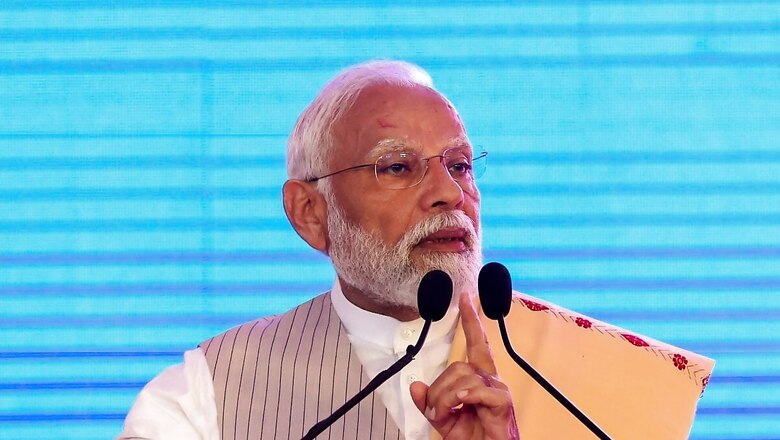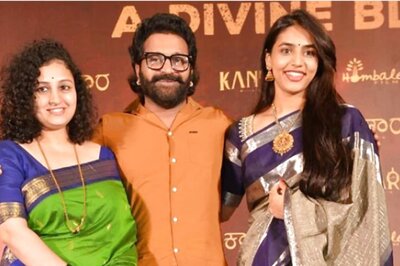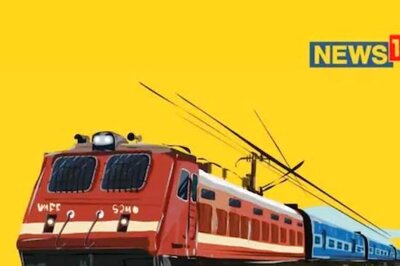
views
A few years ago, I was sitting in a panel discussion in Noida’s Film City. The broad topic of conversation was the re-telling of Indian history. Apt for its time but the topic was very much in discussion for the last couple of years. In fact, be it Modi supporters or the select few ‘usual’ naysayers, all had diverse but strong views on the matter. The curator of the event was best-selling author Vikram Sampath. He has been through a lot as an important ‘general’ in this matter.
However, sometime in the middle of the conversation, I found myself a little uncomfortable. Panelists, moderators and even the questions posed were all concentrating towards the efforts of the authors, their work and how they have, perhaps, battled out the publishing industry that was not willing to give them the space for their select voice. At one point I skipped through the usual and added that we were all missing an important link. New-age India scholarship finds support and is consequently rising because of one very important reason — Prime Minister Narendra Modi.
Much like myself, anyone who has seen the world of scholarship and nationalist literature since 2010 should be able to demarcate or rather see and read this transition. Over a decade ago, there was little scope for writings that did not preach or adhere to the confines set by the Nehruvian consensus, the Gandhi family and the communists.
Consider how reams of literature were written from the early 2000s about Hindu interests, BJP, Narendra Modi and the RSS. Talking about Hindu interests in English academia seemed offensive if not outright criminal. Of course, it has a five-decade history, which connected it to the pre-Partition Macaulay’s Minute. But, it is shocking that those who had bloodstains on their hands ensured that the Hindu psyche had a blot on its forehead for generations to come.
Hence, it is important to recognise that what unfolded after 2014 has an independent long history with compelling reasons. Around the mid-2000s many young scholars and professionals who were doing well in their independent fields, in India and across the world, began noticing how their idea of Bharat was disconnected from the idea of this beloved nation that was prevalent and propagated everywhere.
For instance, how our medieval times were written about as a sequence of battles that we native Indians lost. Stories of Jat resistance against invaders or glory of Vijayanagar of the Ahoms or our maritime history were conveniently redacted. It left a generation so subdued, sub-consciously that the only place where these tales were preserved was in our villages and oral history.
Noticing this, a few voices began to change the music. They stood on the tall legacy of Arun Shourie, Sita Ram Goel, and Ram Swarup, among others. They were all around the 40s, had an alternate version of their past shared over generations, shared some common agonies and found internet platforms as their medium. Blog posts and Facebook acted as platforms to share these views. In no time, Indians all over the world who could well articulate their views began connecting. This common grief strengthened these bonds.
A change began setting in around 2010, with strengthened voices and a ‘free-er’ platform. This was also the time when CM Modi’s graph was on a continual rise. NDA failed to convince the larger population in the 2009 General Assembly elections. A change was brewing. Corruption, endangered internal security, scandals, and a dipping economy all marked the declining status of India on the global stage even as local issues made the state of the nation depressive for Indians. Against this backdrop, CM Modi emerged on the national stage. Having won another election and repeating as the CM of Gujarat; Modi began polarising Indians around him.
Both these developments coincidentally converged around 2013. Modi’s election campaign apart from many other things included dialogues, speaking events etc. across the country. Most of these were led by people who were intellectually and academically inclined. History, economics and cultural themes were discussed. Along with it, was discussed the idea of Bharat.
In a sense, it was very similar to how the RSS shakhas teach the swayamsevaks about the real history of India. Hence, the PM’s ascension had an equally intellectual footing as any other weapon in his arsenal. In fact, one can argue it was perhaps the most important. But, maybe another piece for that.
It is only natural, then, that soon after PM Modi came to power Swarajya magazine took shape. Around the same time, the Indic Book Club established its foundations. Similarly, other think tanks of nationalist orientation like India Foundation, Vision India Foundation and others made their base. Already established Think-tanks like Vivekananda International Foundation among others expanded their work. Many thinkers began writing more furiously. For instance, Sanjeev Sanyal wrote many opinion pieces; his book Land of Seven Rivers became a Bible of sorts for many young thinkers. Over the next ten years, a young crop began yielding results. And, rightfully the credit of this momentum rests on the doors of the PM who gave the necessary courage and faith to the warriors who’d use pen instead of the word.
(Arjun Singh Kadian is an academic and policy professional based out of offices in Haryana and Delhi. Views expressed in the above piece are personal and solely that of the author. They do not necessarily reflect News18’s views)




















Comments
0 comment